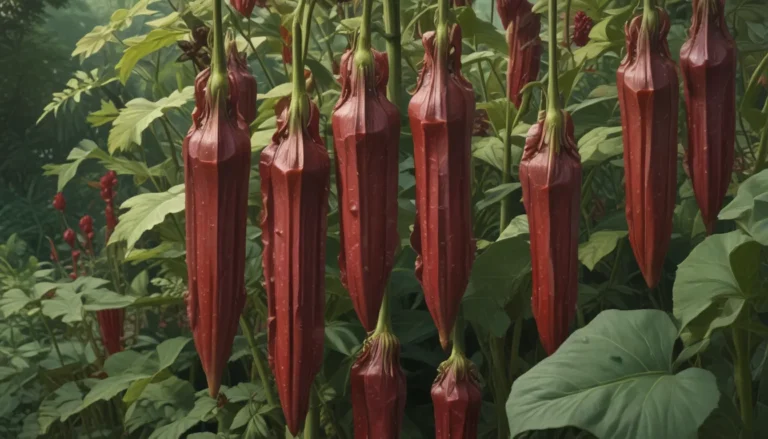Growing a Survival Garden: What You Need to Know

Are you considering starting a survival garden, but unsure where to begin? Look no further! In this comprehensive guide, we will delve deep into the world of survival gardening, exploring what it is, why you should grow one, and how to get started. Let’s dive in and discover the wonders of growing your own food for both sustenance and fulfillment.
What Is a Survival Garden?
A survival garden is more than just a regular vegetable garden. It’s a garden that aims to provide enough food to sustain your family independently, without relying on external sources. Think of it as your personal food sanctuary, ready to support you through challenging situations or emergencies.
To grow a survival garden successfully, you’ll need to practice similar techniques to traditional vegetable gardening. However, with a survival garden, there’s an added emphasis on factors like calorie and nutrient intake, ecological balance, seed saving, and food preservation.
Why Should You Grow a Survival Garden?
There are countless benefits to growing a survival garden beyond just preparing for emergencies. Let’s explore some of the reasons why starting your survival garden is an excellent idea:
– Eat Garden-Fresh Every Day
Imagine the satisfaction of preparing a meal using the freshest ingredients straight from your garden. With a survival garden, you have the opportunity to enjoy healthy, pesticide-free produce every day, enhancing your overall well-being and culinary experience.
– Connect Your Kids to Their Food Source
Involving your children in the survival garden process provides a valuable learning experience. It helps them understand where their food comes from and fosters a deeper connection to nature and the food they consume.
– Reduce Your Environmental Footprint
Growing your own food promotes sustainability by supporting pollinators, enhancing soil health, reducing waste, and minimizing carbon emissions. By following organic practices and incorporating techniques like permaculture, you can create a garden that benefits both you and the environment.
– Share the Abundance
If your survival garden yields excess produce, consider sharing, selling, or bartering it with others. Not only does this prevent waste, but it also fosters community relationships and ensures that your garden’s bounty doesn’t go to waste.
Getting Started with Your Survival Garden
Now that you understand the importance and benefits of a survival garden, it’s time to roll up your sleeves and get started. Here are some essential steps to guide you on your survival garden journey:
1. Set Attainable Goals
When planning your survival garden, start by defining your goals realistically. Consider factors like the percentage of produce you aim to grow, your gardening experience, and the resources you can allocate. Setting achievable goals will help you build a solid foundation for your garden’s success.
2. Do Your Research
Before diving into gardening, educate yourself on organic practices, food preservation, and seed saving. Seek advice from local agricultural experts or experienced gardeners to gain valuable insights and avoid common pitfalls. Researching and learning from others’ experiences can enhance your gardening skills.
3. Determine Size and Location
Choose a suitable location for your survival garden based on factors like sunlight exposure, soil quality, and drainage. Consider the space needed to sustain your family’s dietary requirements and align it with your available time for maintenance. Remember, quality over quantity is key in survival gardening.
4. Decide What to Grow
Selecting crops for your survival garden involves careful planning and consideration. Choose a mix of annuals and perennials that provide essential nutrients, can be stored long-term, and thrive in your climate. Opt for cold-hardy varieties, nutrient-dense crops, and plants that support a diverse ecosystem in your garden.
5. Gather Your Materials and Equipment
Prepare the necessary tools, supplies, and seeds for your survival garden. Consider investing in seed-starting supplies, hand tools, and irrigation systems to ensure your garden’s success. Build structures like greenhouses or cold frames to extend your growing season and maximize productivity.
6. Take Notes
Documenting your gardening journey through notes and observations is crucial for learning and improvement. Record planting dates, growth patterns, weather conditions, and crop yields to track your garden’s progress over time. Your notes will serve as a valuable resource for planning future seasons and optimizing your garden’s productivity.
7. More to Consider
As your survival garden evolves, explore sustainable practices like rainwater collection, companion planting, and integrating animals for additional food sources. Embrace continuous learning and experimentation to refine your gardening skills and create a resilient and productive garden.
In Conclusion
Embarking on the journey of growing a survival garden is a rewarding and enlightening experience. Whether you’re preparing for emergencies or simply seeking a deeper connection to nature, a survival garden offers a host of benefits for you and your family. By following these steps and embracing the principles of sustainable gardening, you can cultivate a thriving garden that nourishes both body and soul.
Are you ready to start your survival garden adventure? Share your thoughts and questions in the comments below. Let’s cultivate a community of resilient gardeners passionate about growing their own food and embracing the beauty of nature.
For more insights on sustainable gardening and creating a vibrant vegetable garden, explore our featured articles:
- The Ultimate Guide to Understanding Garden Soil
- How to Start Annuals Indoors from Seed
- Teaming with Microbes: A Fresh Review for Today’s Gardeners
Let’s sow the seeds of resilience and abundance together!
(Photo by Heather Buckner)
In conclusion, the rewritten article provides a detailed and informative guide on establishing a survival garden, emphasizing the importance of self-sufficiency, sustainability, and environmental consciousness. By incorporating practical tips, personal anecdotes, and expert advice, the article aims to empower readers to embark on their survival gardening journey with confidence and passion.





